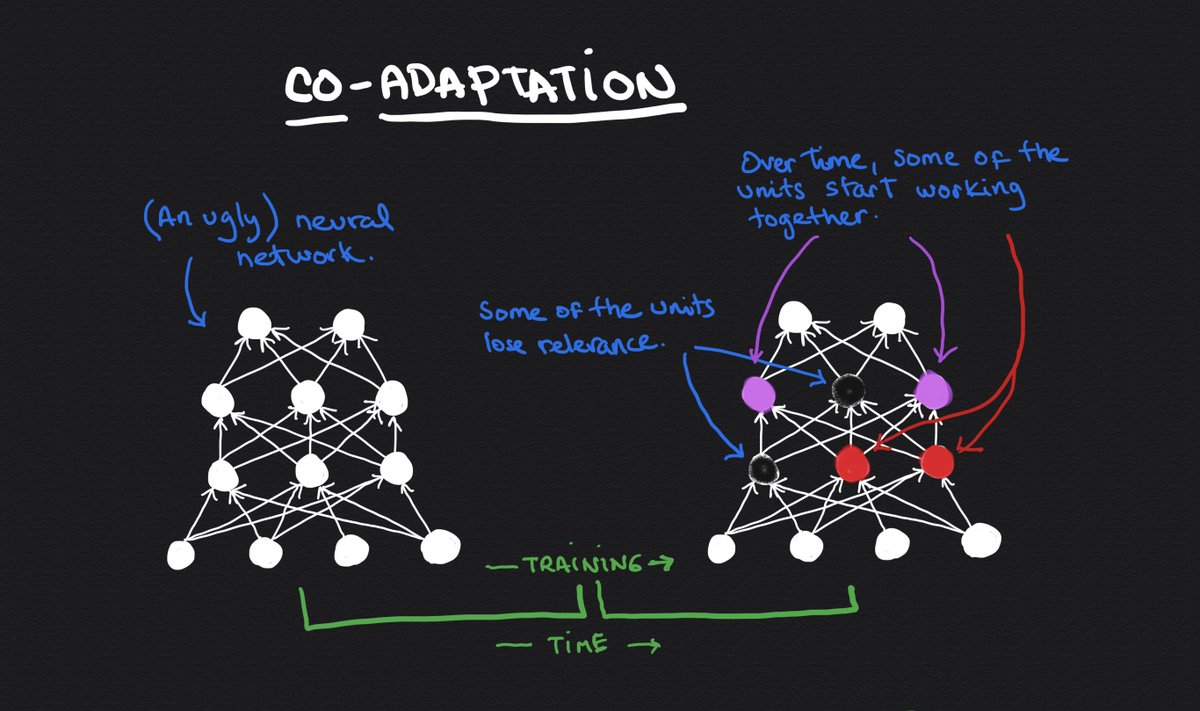
Working on problems is the best way to learn Machine Learning.
Here are 10 projects to start your journey.
🧵👇
Here are 10 projects to start your journey.
🧵👇
I picked all 10 projects from Kaggle.
When you are getting started, having a community ready to help is very important.
Also, every one of these problems has been solved by many people, and you can find those answers if you get stuck!
👇
When you are getting started, having a community ready to help is very important.
Also, every one of these problems has been solved by many people, and you can find those answers if you get stuck!
👇
I sorted the problems in the way I'd recommend you to start.
They more or less increase in complexity as you move through the list.
Let's get started!
👇
They more or less increase in complexity as you move through the list.
Let's get started!
👇
1. Titanic: Machine Learning from Disaster
This is the perfect project to get started with classification algorithms.
It will teach you some data engineering practices, and you can solve it with simple Decision Trees.
kaggle.com/c/titanic
(1 of 10)
This is the perfect project to get started with classification algorithms.
It will teach you some data engineering practices, and you can solve it with simple Decision Trees.
kaggle.com/c/titanic
(1 of 10)

2. House Prices
Now that you understand classification problems, it's time to look into regression.
Here you'll predict the price of a house given its characteristics.
kaggle.com/c/house-prices…
(2 of 10)
Now that you understand classification problems, it's time to look into regression.
Here you'll predict the price of a house given its characteristics.
kaggle.com/c/house-prices…
(2 of 10)

3. Wine Quality
Another classic problem where you can explore regression and classification algorithms is the Wine Quality challenge.
kaggle.com/rajyellow46/wi…
A great candidate to reaffirm what you've learned so far.
(3 of 10)
Another classic problem where you can explore regression and classification algorithms is the Wine Quality challenge.
kaggle.com/rajyellow46/wi…
A great candidate to reaffirm what you've learned so far.
(3 of 10)

4. Mall Customer Segmentation Data
Now it's time to look into Unsupervised Learning techniques, and this dataset is a great start:
kaggle.com/vjchoudhary7/c…
Your goal here is to determine which customers are a good target for your marketing department.
(4 of 10)
Now it's time to look into Unsupervised Learning techniques, and this dataset is a great start:
kaggle.com/vjchoudhary7/c…
Your goal here is to determine which customers are a good target for your marketing department.
(4 of 10)

5. Digit Recognizer
This is the "Hello World" of Computer Vision, so you want to start here before getting any deep.
kaggle.com/c/digit-recogn…
You'll learn how to "read" images to determine the specific digit they show.
(5 of 10)
This is the "Hello World" of Computer Vision, so you want to start here before getting any deep.
kaggle.com/c/digit-recogn…
You'll learn how to "read" images to determine the specific digit they show.
(5 of 10)

6. Dogs vs. Cats
After getting the hang of neural networks, you can upgrade to a more complex Computer Vision problem: the Dogs vs. Cats dataset.
kaggle.com/c/dogs-vs-cats
Your goal is simple: does the input picture show a dog or a cat?
(6 of 10)
After getting the hang of neural networks, you can upgrade to a more complex Computer Vision problem: the Dogs vs. Cats dataset.
kaggle.com/c/dogs-vs-cats
Your goal is simple: does the input picture show a dog or a cat?
(6 of 10)

7. Bag of Words Meets Bags of Popcorn
As soon as you want to get into Natural Language Processing, this is a great problem to pick up:
kaggle.com/c/word2vec-nlp…
Here you'll be doing sentiment analysis on IMDB movie reviews.
(7 of 10)
As soon as you want to get into Natural Language Processing, this is a great problem to pick up:
kaggle.com/c/word2vec-nlp…
Here you'll be doing sentiment analysis on IMDB movie reviews.
(7 of 10)

8. The Walmart Challenge
Time series analysis is another big area covered by Machine Learning, and the Walmart dataset will get you started.
kaggle.com/bletchley/cour…
Here you will be predicting Walmart's weekly sales based on past data.
(8 of 10)
Time series analysis is another big area covered by Machine Learning, and the Walmart dataset will get you started.
kaggle.com/bletchley/cour…
Here you will be predicting Walmart's weekly sales based on past data.
(8 of 10)

9. The Movies Dataset
Do you want to build a recommendation system (similar to what Netflix does)? You can start here:
kaggle.com/rounakbanik/th…
Recommendation systems are very useful and have multiple applications.
(9 of 10)
Do you want to build a recommendation system (similar to what Netflix does)? You can start here:
kaggle.com/rounakbanik/th…
Recommendation systems are very useful and have multiple applications.
(9 of 10)

THIS PAGE INTENTIONALLY LEFT BLANK
(10 of 10)
(10 of 10)
11. Open Images 2019 - Object Detection
I wanted to end the list with another extremely useful application of Computer Vision: Object Detection.
kaggle.com/c/open-images-…
Here you have 9 million images to play with.
(11 of 10)
I wanted to end the list with another extremely useful application of Computer Vision: Object Detection.
kaggle.com/c/open-images-…
Here you have 9 million images to play with.
(11 of 10)

• • •
Missing some Tweet in this thread? You can try to
force a refresh




